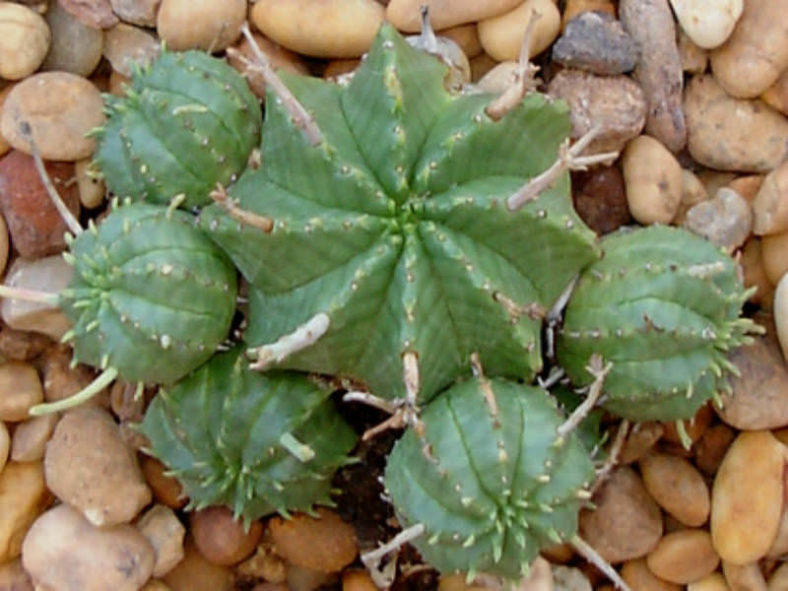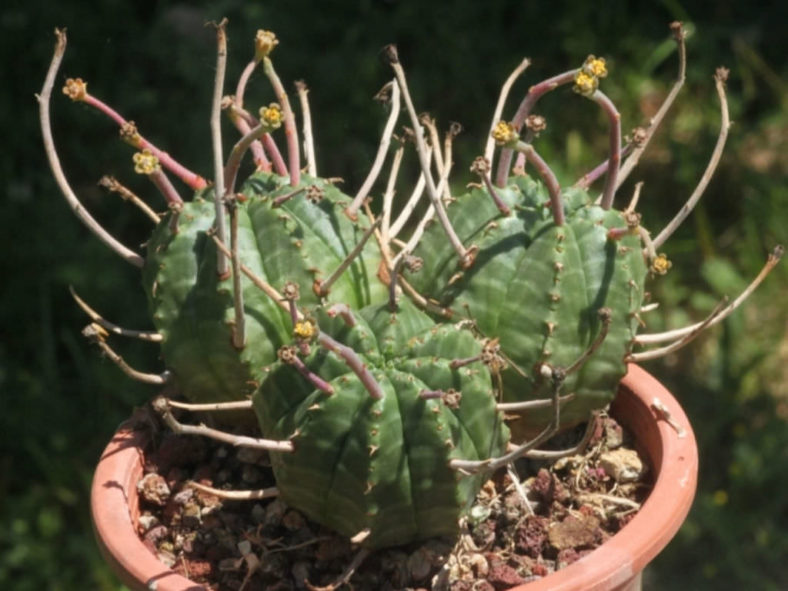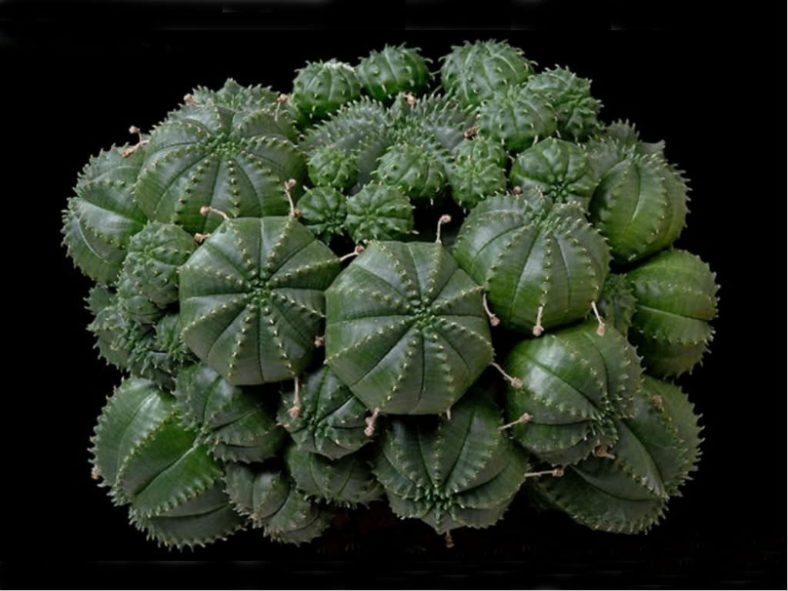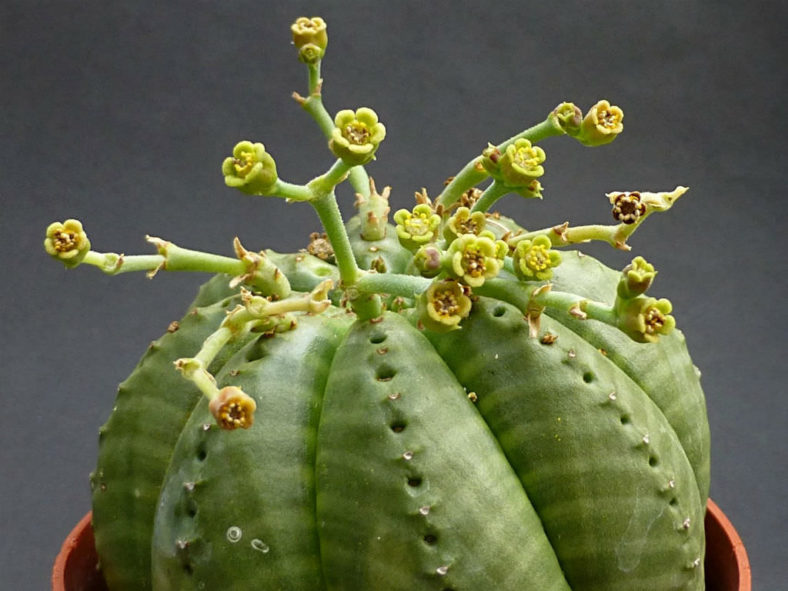Scientific Name
Euphorbia meloformis Aiton
Common Name(s)
Melon Spurge
Synonym(s)
Euphorbia falsa, Euphorbia infausta, Euphorbia pyriformis
Scientific Classification
Family: Euphorbiaceae
Subfamily: Euphorbioideae
Tribe: Euphorbieae
Subtribe: Euphorbiinae
Genus: Euphorbia
Etymology
The specific epithet "meloformis" (pronounced "mel-OH-for-miss") means "melon-shaped" and refers to the shape of the stems of this species.
Origin
Euphorbia meloformis is native to South Africa (Great Karoo and Eastern Cape).
Description
Euphorbia meloformis is a small succulent with green spherical to cylindrical stems with 8 to 12 ribs and usually with many spinescent, simple or branched peduncles. It typically grows solitary or occasionally produces offsets from the base. The stems can reach up to 8 inches (20 cm) in height and 6 inches (15 cm) in diameter. Young plants have leaves that sometimes dry out quickly.
This species is similar to Euphorbia obesa but differs by its small yellow flowers on peduncles, up to 2.4 inches (6 cm) long, that dry and persist on the plant after blooming.
Subspecies

Hardiness
USDA hardiness zones 10a to 11b: from 30°F (-1.1°C) to 50°F (10°C).
How to Grow and Care
Euphorbias are very easy to care for. These plants require a little pampering to become established, but once they are, they are self-sufficient. More die from too much care and watering than from neglect. Euphorbias need well-draining soil and lots of sunlight. They are not particular about soil pH but cannot tolerate wet soil. Unlike most succulents, Euphorbia does not handle long periods of drought well. It may need weekly watering during the summer. Water whenever the soil is dry several inches below the surface. Water deeply, but don't let them sit in wet soil, which can cause root rot. Add some organic matter or fertilizer to the planting hole. If you are growing them in containers or your soil is poor, feed them with a half-strength fertilizer monthly.
These succulents can be grown from seed, but they can be difficult to germinate (or even find). They are usually propagated by cuttings. This can be tricky because of the exuding sap. Rooting hormone is recommended with Euphorbias. They tend to grow problem-free, but there are a few pests and diseases to be alert for.
Learn more at How to Grow and Care for Euphorbia.
Links
- Back to genus Euphorbia
- Succupedia: Browse succulents by Scientific Name, Common Name, Genus, Family, USDA Hardiness Zone, Origin, or cacti by Genus
Photo Gallery
Click on a photo to see a larger version.


